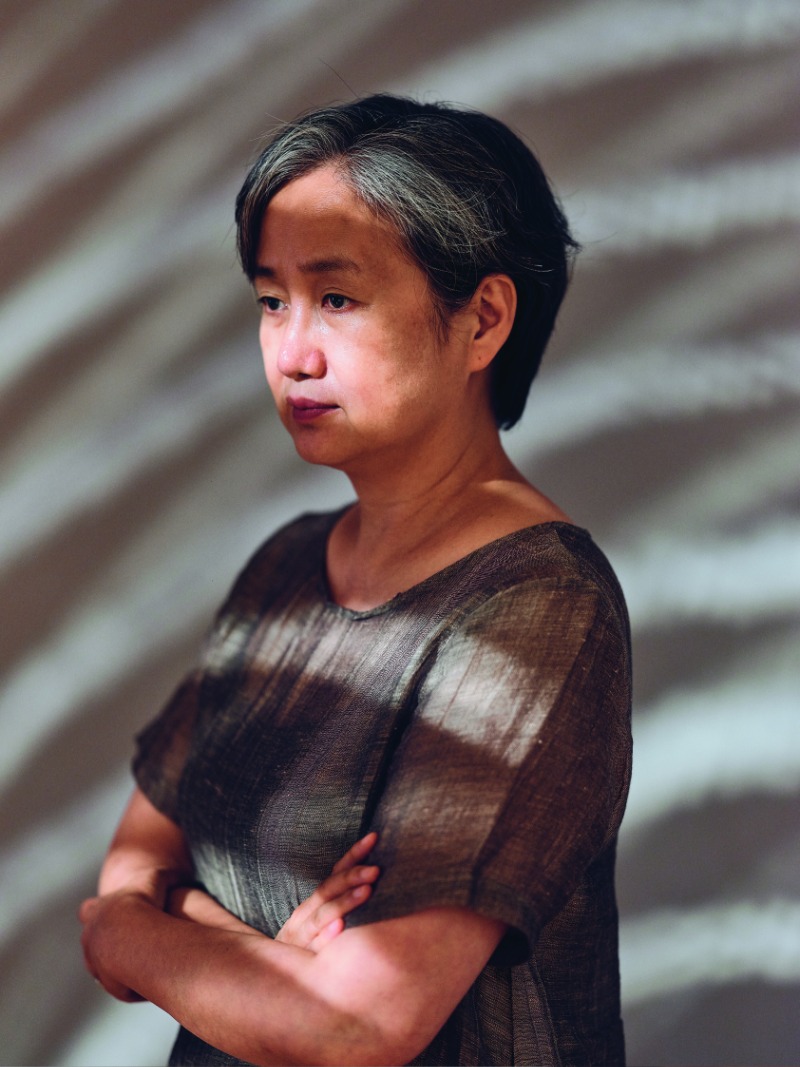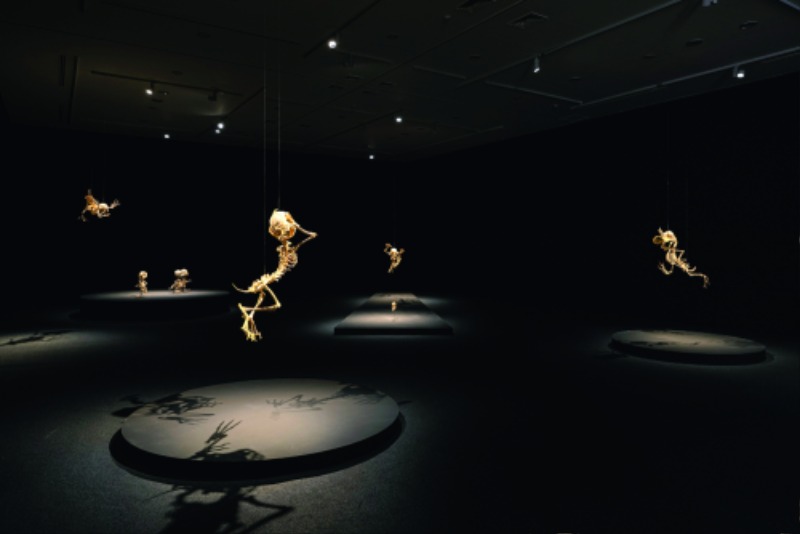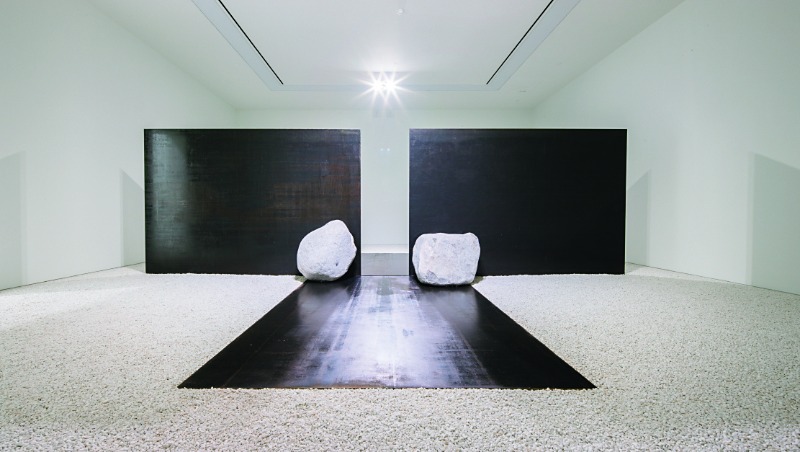Art galleries in Korea are adjusting to changes that include growth of the leisure class, changing perceptions in the art market, and digitalization. Ki Hey-kyung, Director of the Busan Museum of Art, provides insights into how art galleries are reconceptualizing themselves.

A longtime curator at Korea’s foremost art galleries, Ki Hey-kyung is now director of the Busan Museum of Art. She ensures that exhibitions stay true to the duty of art museums and also reflect the flow of the times.
In 2019, Korea’s Ministry of Culture, Sports and Tourism released its “Medium to Long-Term Plan for Museum and Art Gallery Promotion.” It set the goal of enriching the lives of citizens by raising the number of museums and art galleries nationwide to 1,310 by 2023, a 16.5 percent increase from 1,124 in 2018. The new openings in every region have led to record numbers of visitors, especially young people.
Ki Hey-kyung has been the director of the Busan Museum of Art (BMA) since 2019. Previously, she worked at the National Museum of Modern and Contemporary Art (MMCA) and the Buk-Seoul Museum of Art (Buk-SeMA). Having planned and curated many exhibitions in the past, she anticipates changes in the way public art galleries will operate going forward.
What are the current trends in the gallery scene?
In the past, there was a tendency for galleries to try taking the lead with visitors, declaring, “This is an important exhibit, so you must see it.” We’re now in a time where we need to focus on two-way communication, so visitors can discover things for themselves and experience them directly. At the BMA, we are currently holding an exhibition on free time called “I Go to the Gallery to Do ○○” where we have laid out over 100 participatory exhibits; things like meditating in a space where Lee Ufan’s paintings are displayed, or doing yoga in front of a work by painter Kim Chong-hak. Since our world is so full of interesting things to see, galleries have to change to fit the tastes and dispositions of their visitors.
So, galleries have changed their attitude?
Yes. They have begun providing opportunities for people to choose how they want to view and enjoy their collections. In the past, it was common for students to come on field trips and have a specified route. Most of them would end up leaving without properly appreciating anything. Now the atmosphere has changed so that people can explore exhibitions freely and just “zone out” in front of a painting that stands out for them, or roll out a mat and do some yoga if they need a moment of calm.
What about social media?
One of the factors that has brought about change in the way people inhabit galleries are social media apps like Instagram. For the younger generation, it’s routine to post a photo to show that they have been somewhere, and art galleries are no exception. As a result, curators are now starting to think about where to place photo spots within the exhibitions, so that those pictures will come out well. Daelim Museum was the fastest in adopting this kind of design planning.
The “Christian Boltanski: 4.4” exhibition at our museum is an example of a show that has seen the impact of social media. As the third exhibition in the “Lee Ufan and His Friends” series, it was held from last October to this March, and while we were preparing the exhibition, the artist suddenly passed away. Our insurance premium for the works went up 50-fold, which meant we couldn’t spend anything on promotion. But despite this, a few of the works went viral as popular photo spots, and then the response was massive when people heard that RM from BTS had visited.
What convinced you galleries had to change?
Even into the early 2000s, art galleries were at the very top of the pecking order in the art ecosystem. Just one extra line in an artist’s resume denoting a solo exhibition at a prestigious gallery would put a hefty premium on their work. At that time, galleries were a kind of authorizing institution. But around 2015, when I went to Art Basel in Hong Kong, I started to look at the market scene differently.
Until then, I pretty much thought of galleries as places to sell artworks. But after seeing the way that the international galleries participating in Art Basel were signing contracts with young artists and supporting their development, I began to question whether the market could develop even if galleries did not operate as intermediaries.

The “Korean Contemporary Artist Focus Ⅳ – Lee Hyung-koo” exhibition at the Busan Museum of Art this year highlighted the artist’s exploration of the human body in his own sculptural language
Courtesy of the Busan Museum of Art
So, what is the role of art galleries?
If they don’t change now, galleries are in serious danger of dying out. They absolutely need to reform and improve systems. The art market cycle is incredibly fast, and I think this is precisely why art galleries play a crucial role. A market dominated by the logic of capital does not wait around until young people become mature collectors with ample experience. It only seeks to sell works here and now. But artists do not grow on their own. They need systems to back them up, and that role should be played by the galleries already within the ecosystem.
It is in this context that we constantly hold open calls, searching for the best works by contemporary artists in Korea. We mainly end up featuring works by artists in their late 40s to mid-50s. The reason is that there are relatively few opportunities for artists in this middle range to have their work highlighted. For young artists it’s comparatively easy to get grant funding, and there are many opportunities for exposure, while veteran artists have stable channels through which to sell their works. I think the role of galleries is to discerningly display the works and worlds of artists that are overlooked by the art market.
The art market seems to be widening.
I think the posthumous donation of former Samsung Group chairman Lee Kun-hee’s collection has sparked popular interest. The atmosphere in the art market changes every decade. The market was rising, and the donation by Chairman Lee added fuel to the fire. I’ve even heard that young visitors are now lining up outside galleries before opening time.
There was a similar state of affairs when the art market was booming in 2007. Leading domestic galleries would send people to university graduation shows to scout artists fresh out of art school and sell their works or pass them straight through to the auction houses.
But the works of artists who were so popular at the time that they had 200 people signed up as potential bidders now sell at a tenth of the price. This tells us that our art market failed to protect value. In recent years, galleries from all over the world have been setting up branches in Korea. It’s certainly nice to see, but on the other hand, I’m concerned that Korea might simply be used as another place to sell. The art market is revitalizing again, but it’s important to bear in mind that the market always fluctuates.
What has been the effect of COVID-19?
Ironically, COVID-19 served as an opportunity to speed up the digital transition. On beginning my appointment as director at the BMA, I set the goal of digitizing the entire collection of 70,000 or so artworks and resources, and creating a database. However, with the spread of COVID-19, restrictions were placed on visiting galleries, so the need for digital materials naturally became more urgent. Unlike other sectors, the digital transition was occurring relatively slowly in galleries, but in our case, we completed a digital management system for our collection in 2021, and connected it to our website at the start of this year. Since last year, we have been doing 3D imaging of works in the collection, digitalization and setting up a database. Our gallery renovations, to be completed in 2024, will allow visitors to interact with digitized materials in the “Digital Learning Zone.”

“c++swingby no.1.” Lee Han-su. 2007. Digital print on paper. 147 x 127 cm.
As well as exploring the meaning of “free time,” the exhibition offers events that cater to the way art galleries are becoming spaces for sharing varied experiences.
Courtesy of the Busan Museum of Art
How will the BMA renovate?
Our focus will be on the transformed role of art galleries. If in the past galleries were places that managed and displayed collections, now they must become institutions thatnew value. They have to be able to serve as platforms that produce new paradigms or discourses. Countless art galleries abroad have been renovating since 2010 for exactly the same reason. At New York’s Museum of Modern Art, they spent $450 million expanding and reimagining a building whose construction was only completed in 2005. The reason was to improve their services, which tells us that what visitors expect from art galleries has changed.
What is most important for art galleries now?
When young people go to bustling city streets, the flashy images beaming out of vast electronic displays grab their attention. No longer is this a world where only artists produce images. The more capital is invested, the more spectacular the images on offer become. In such circumstances, most galleries will agonize over what content they should offer. Change and innovation are necessary, but with budgets always tight, they strive tothe right strategies to remain relevant.
Promotion and marketing have become more important than ever, but the foundation of marketing is good content. And so, in the end, the crucial thing for art galleries now is foundational. We must offer content that people want to come in for and experience.

“Space Lee Ufan,” an annex of the Busan Museum of Art, houses a permanent exhibition of the works of the world-renowned artist Lee Ufan. The space itself is considered an artwork.
Courtesy of the Busan Museum of Art
Kim MinCulture Reporter, Dong-A Ilbo
Heo Dong-wuk Photographer